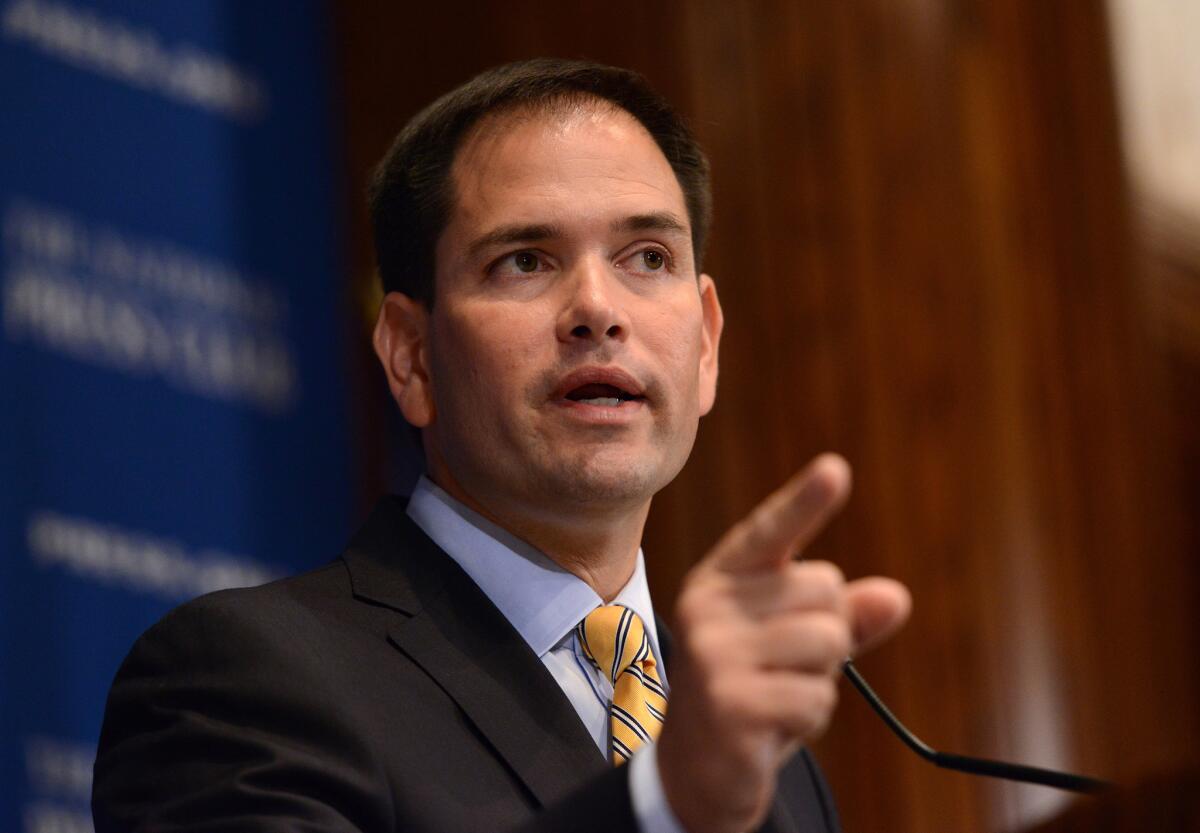The secret GOP swipe at Obamacare--and you--in the year-end spending bill

Underscoring how much mischief can result when Congress acts in haste and in secret, hidden away in the year-end omnibus spending bill being acted on this week is an attack on a key provision of the Affordable Care Act long targeted by the GOP.
The provision involves risk corridors, which are designed to stabilize insurance premiums in the first few years of the law. The year-end spending bill, which was passed by the House on Thursday and is now before the Senate, quietly erodes funding for the provision.
Republicans have chosen to label the provision a “bailout” for insurance companies. I’ve labeled that position the most cynical attack on Obamacare, because those who advance it -- notably Sen. Marco Rubio (R-Fla.) -- obviously know it’s a lie. They know it’s actually a consumer protection feature, so calling it “corporate welfare,” as Timothy P. Carney did this week in the Washington Examiner, is a neat bit of disinformation. Adding to the cynicism, the same provision is an essential part of Medicare Part D, which the GOP enacted in 2003.
Here’s another sick irony: One of the raps on the risk corridor provision is that it was “buried deep” in administration explanations of the bill, as Rubio put it. But in fact, the ACA was extensively debated and available for scrutiny by any legislator who chose. The attack on the provision, however, actually is “buried deep” in the year-end spending bill: It’s on page 892 of the 1,603-page bill, which has barely been debated at all.
Let’s see how risk corridors work, and how they’re undermined by the spending bill.
It was well understood that health insurers would have difficulty pricing their plans in the individual market in the first years of the ACA, starting in 2014. Not only would some insurers be entering that market in volume for the first time, but the market itself would be dramatically altered by the flood of new customers and such ACA rules as the prohibition on exclusions for pre-existing conditions. Some insurers will end up setting their premiums too low, and therefore will have to pay out benefits higher than they expected; others will set their rates too high, and will capture a windfall.
Without a safety valve, these miscalculations could have an impact on premiums the following year, as insurers tried to adjust. So insurers that set prices more than 3% below a set target get a reimbursement from the government, and those that overprice by the same margin have to pay some of the windfall to the government (see accompanying graphic). Importantly, the arrangement is temporary: It expires after 2016, by which time it’s assumed that insurers will know what they’re doing.
Obviously, this isn’t a “bailout,” since it protects underpricing insurers only on the margins, while also providing a check on profiteering. The Congressional Budget Office, moreover, has projected that over time, the budgetary effect of the risk-corridor program will be neutral -- the payments by overcharging insurers will perfectly balance the payments to undercharging insurers. For an excellent explanation of the various forces at work in risk-corridor design, see this post by the pseudonymous insurance expert Richard Mayhew.
Some smart conservatives acknowledge that risk corridors are a good idea. As Yevgeniy Feyman of the Manhattan Institute informed Forbes readers in January, “Any conservative reform plan for universal coverage will have to use similar methods of risk adjustment.... If you want insurers to participate more broadly in the individual market, you’ll need to offer a carrot to offset the unavoidable uncertainties.”
Nevertheless, congressional Republicans couldn’t resist taking a swipe at this little-understood provision in the ACA, and Democrats weren’t sufficiently attentive, or caring, to call them out on it. The year-end spending bill forbids the Department of Health and Human Services to use any outside government funds to pay out adjustments to insurers. On the face of it, the government can only use surplus coming in from overcharging insurers for that purpose. (That’s the interpretation healthcare expert Tim Jost gives to Dylan Scott of Talking Points Memo.)
For the moment, that makes the provision little more than a symbolic swipe at Obamacare. But that could change, and the CBO projections could be wrong. In that event, the Republicans’ little act of vandalism could end up costing ordinary citizens money. Nice work, GOP. Extra points for pulling it off in the dark.
Keep up to date with the Economy Hub. Follow @hiltzikm on Twitter, see our Facebook page, or email [email protected].
More to Read
Inside the business of entertainment
The Wide Shot brings you news, analysis and insights on everything from streaming wars to production — and what it all means for the future.
You may occasionally receive promotional content from the Los Angeles Times.










